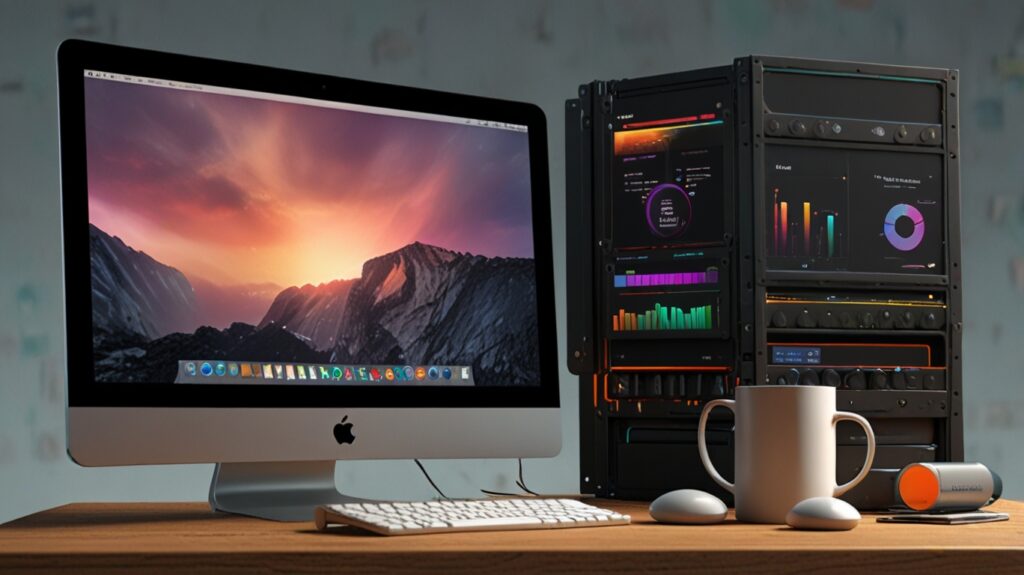When running macOS and Windows on the same Mac via dual boot (typically using Boot Camp), you might run into a common issue: file sharing between the two operating systems isn’t automatic. Each OS uses different file systems, and without proper setup, accessing your documents, media, or work files from both sides can be frustrating.
In this guide, we’ll show you how to share files between macOS and Windows on a dual-boot Mac, using practical, reliable methods.
🔍 Why Sharing Files Isn’t Straightforward
- macOS uses APFS or HFS+ file systems, which Windows can’t read natively.
- Windows uses NTFS, which macOS can read but not write to by default.
- This means files saved on your Windows partition can’t be modified from macOS without help — and vice versa.
✅ Best Methods to Share Files Between macOS and Windows
🗂 1. Use a Shared exFAT Partition
exFAT is a cross-platform file system that works with both macOS and Windows for reading and writing files.
✔ How to Set It Up:
- Backup your data.
- Open Disk Utility in macOS.
- Create a new partition (or format an external drive).
- Choose exFAT as the file system.
- Name the drive (e.g., “Shared”).
- Click Apply.
👍 Pros:
- Read/write access from both OSs
- Easy and built-in
- Works with internal and external drives
👎 Cons:
- Requires extra disk space
- May need partition resizing if space is limited
💽 2. Use an External exFAT Drive or USB Stick
If you don’t want to partition your internal drive, just use a USB drive or external HDD/SSD formatted as exFAT.
- Format it using Disk Utility (macOS) or Disk Management (Windows)
- Plug it in, and use it from either OS
- Great for large files like media, project folders, or backups
🔄 3. Enable NTFS Write Support on macOS (Not Recommended Natively)
By default, macOS can read NTFS drives (like your Boot Camp partition), but can’t write to them.
❗ Option 1: Use Third-Party Software
Install NTFS drivers like:
- Paragon NTFS for Mac (paid)
- Tuxera NTFS for Mac (paid)
- Mounty for NTFS (free, but less reliable)
These tools allow full read/write access to NTFS volumes from macOS.
❗ Option 2: Use macOS Terminal (experimental)
You can enable NTFS write support via Terminal commands, but this is unstable and not recommended for beginners or critical data.
☁️ 4. Use Cloud Storage (iCloud, Google Drive, OneDrive)
Cloud syncing services let you access your files from both OSs via the internet.
- Install the cloud app on both macOS and Windows
- Files are synced automatically
- Works across devices
👍 Pros:
- No need for partitions
- Automatically up to date
- Great for light or shared use
👎 Cons:
- Needs internet access
- Limited storage (unless paid)
- Not ideal for very large files
📡 5. Use a Network Drive or File Server
If you have access to a network-attached storage (NAS) or a local server:
- Mount it as a drive on both macOS and Windows
- Use standard file sharing protocols (SMB, AFP, etc.)
- Great for team environments or office networks
⚙️ Bonus: Make Windows See macOS Files (Advanced Users Only)
Windows doesn’t natively read APFS or HFS+ partitions, but you can use third-party tools:
- Paragon APFS for Windows (paid)
- MacDrive by Mediafour (paid)
⚠️ These tools should be used with caution — improper use can lead to data loss or corruption.
✅ Quick Comparison Table
| Method | Read/Write on macOS | Read/Write on Windows | Difficulty | Ideal For |
|---|---|---|---|---|
| exFAT Shared Partition | ✅ Yes | ✅ Yes | ⭐⭐ | Everyday users |
| exFAT USB Drive | ✅ Yes | ✅ Yes | ⭐ | Portable file transfer |
| NTFS on macOS (w/ driver) | ✅ Yes (with tools) | ✅ Yes | ⭐⭐⭐ | Advanced users |
| Cloud Storage | ✅ Yes | ✅ Yes | ⭐ | Frequent sync, internet access |
| Network Drive | ✅ Yes | ✅ Yes | ⭐⭐ | Offices, team sharing |
🔚 Conclusion
Sharing files between macOS and Windows on a dual-boot system doesn’t have to be complicated. The safest and most universal solution is to use a shared exFAT partition or an exFAT-formatted external drive.
For those who prefer automation or already use cloud tools, services like Google Drive or OneDrive are excellent alternatives. And if you’re more technical or need advanced access, third-party NTFS/APFS drivers are available — just use them carefully.
